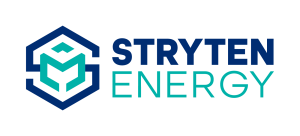As a fleet manager, you want to get the most life and best performance from your forklift batteries — you want the right motive power system for your operation. To do that, you need to look at the data. Whether you are running lead or lithium-ion, this information gives you critical insights to make sure you get the most value out of your batteries. But to make any sense of this data, you have to divide it into operational versus systemic data.
Operational Data
Actionable data is critical for fleet managers. If you’re not operating your batteries correctly, a good data monitoring system should let you know this so you can take action to fix it. This includes parameters such as watering and equalization charges for lead batteries and plug-ins for both lead and lithium. We call this operational data as this is under the direct control of the fleet manager running the operation.
When Stryten Energy commissions a motive power system, we work with our end-users to establish best practices for battery operations. We make sure that your operators understand how much charge time the batteries need and when they should be watered and equalized. This is usually as simple as plugging in during scheduled breaks and leaving the battery connected to the charger over the weekend so the proper equalization can be done by the charger.
Systemic Data
Systemic data, on the other hand, is data that is out of the direct control of the fleet manager. These are parameters such as battery temperature, voltage and peak currents. If you manage the operational issues, there should be no systemic issues unless the battery and charger system was incorrectly sized, or your operation grew beyond the system’s capacity.
For example, if a lead battery is overheating in an operation that has high peak currents due to heavy lifts, no amount of “good behavior” from the operator will fix this. This is an example of misspecification as current draws above 50% of the battery ampere hour size usually require a lithium battery that has lower internal resistance and is, therefore, able to handle higher currents.
Designing the Right Motive Power System
Stryten Energy inCOMMAND helps you design the right motive power system with advanced modeling tools that leverage real fleet data to specify the right battery and charger solution for your unique application. A properly designed and installed motive power system will mitigate the risk of systemic issues. And once you are up and running, it puts the operational data you control right in your hands to ensure you get years of optimal performance out of your motive power fleet.
Contact us to learn more about how we can help you build the best motive power system for your fleet.







